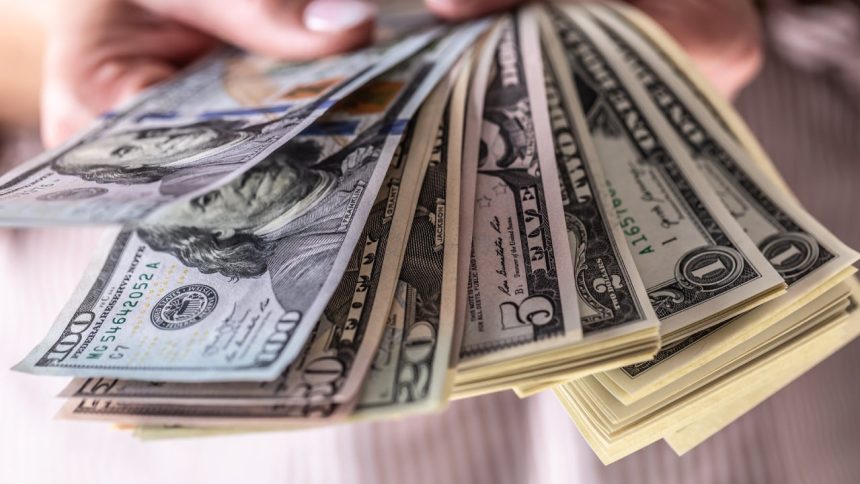SimpleImages/Getty Images
Key takeaways
- Fiat money is a government-created currency, usually issued by its central bank, and isn’t backed by a tangible commodity, like a precious metal.
- Unlike commodity-backed money, fiat money isn’t intrinsically valuable; its worth is determined by supply and demand and the issuing government’s credibility.
- Most countries use fiat currency. However, fiat currency can be mismanaged and face crises.
Fiat money is a form of government-issued currency that does not have intrinsic value and is not backed by a physical commodity such as gold. Fiat money has been around for centuries, but its use has become increasingly common in the modern world. In fact, most countries use fiat currency. The U.S. dollar is a fiat currency, and so are the euro, British pound and Japanese yen, to name a few.
Here’s what you need to know about fiat money, its advantages, disadvantages and alternative forms of currency.
How does fiat money work?
Fiat money can fluctuate based on factors such as:
- Supply and demand: In many countries, a central bank, like the Federal Reserve in the U.S., manages the money supply. Economic conditions can also influence fiat money’s value.
- Government stability: Fiat money is not inherently valuable and is only considered money because the government has authorized it to be used as a medium of exchange. As such, if the issuing government loses credibility or creates too many paper bills, its fiat currency could become devalued.
- Inflation: Certain factors, such as interest rates set by a central bank and market operations, help control inflation and maintain a fiat currency’s value. “Raising interest rates not only helps keep inflation low, but it can boost the value of the currency as investors worry less about the erosion of buying power and look to take advantage of the higher interest rates,” says Greg McBride, chief financial analyst for Bankrate.
Examples of fiat money
Here are some examples of fiat currencies around the world:
- U.S. dollar
-
Issued by the Federal Reserve, the U.S. dollar has not been backed by gold or silver since 1971. The U.S. dollar is widely accepted as a global currency and is one of the most traded currencies in the world.
- Euro
-
The euro is the official currency of 20 European countries, which are collectively known as the Eurozone. Some countries that are not EU members use the euro as their de facto currency. The European Central Bank is responsible for managing the stability of the euro.
- Japanese yen
-
The yen is the official currency of Japan and is the third-most traded currency in the world after the U.S. dollar and euro. The yen is a major currency in the global foreign exchange market.
- British pound sterling
-
The British pound sterling, commonly referred to as the pound, is the official currency of the U.K. The pound is issued by the Bank of England, and is one of the oldest existing currencies.
Advantages of fiat money
Many countries rely on fiat currencies, and with good reason. There are some clear advantages to the system. Here are a few:
- Economic control: Fiat currency empowers central banks to exercise control over the monetary supply when the currency is not backed or based on precious metals. This allows governments to manipulate interest rates, regulate credit supplies, implement inflation control measures and more.
- Cost-effective: Fiat money offers a cost advantage because it can be produced relatively cheaply, which can help reduce the supply costs of currency. Precious metals that have been historically used as currency, like gold, are costly to source and have limited availability.
- Accepted worldwide: Fiat currencies like the U.S. dollar are used around the world, making them ideal for international trade and business transactions.
- Streamlined: Using paper money eliminates the hassle of transferring precious metals among banks. Fiat currency facilitates fractional reserve banking, which enables commercial banks to utilize more money to fulfill borrowing demands.
Disadvantages of fiat money
While fiat currency can be quite advantageous, it does have some drawbacks:
- Inflation: One of the most well-known disadvantages of fiat money is the potential for inflation. Because fiat currency isn’t linked to any valuable commodity, it can be produced in unlimited quantities, especially if a government is facing budget deficits or high levels of debt. This can lead to a vicious cycle of debt and inflation, potentially leading to economic bubbles.
- Dependence on government values: Fiat money gets its value from the trust and confidence placed in the issuing government. So, the value of the currency depends on the economic conditions of the issuing country and the stability of its government and institutions.
- Subject to manipulation: Since there is no limit to the amount of fiat money in circulation, it is subject to constant manipulation by the central bank and the government. This can lead to inflation, interest rate manipulation and other issues.
The history of fiat money in the U.S.
- 1900: The Gold Standard Act was adopted by the U.S. Congress, which legally established the gold standard after decades of de facto regulation.
- 1913: The Federal Reserve was created in response to the panic of 1907. It incorporated the gold standard and controlled the money supply.
- 1933: President Franklin D. Roosevelt suspended the gold standard. His executive order required all citizens to turn in gold in exchange for dollars in an attempt to inflate the money supply and help fight the economic downturn.
- 1944: After negotiations between 44 countries, the Bretton Woods Agreement was reached. It created the International Monetary Fund (IMF) and the World Bank. The latter helped establish a system of fixed exchange rates centered on the U.S. dollar and gold.
- 1971: President Richard Nixon announced his New Economic Policy, which, among other economic initiatives, barred the government from converting dollars to gold — in other words, it ended the gold standard. This marked a shift in the global monetary system.
Alternatives to fiat money
While most people rely on fiat money in their daily lives, there are a few alternatives:
- Commodity money
-
Commodity money possesses intrinsic value, meaning it has non-monetary value that can also be used for commercial or industrial purposes. Examples include gold and silver. Commodity money’s value stems from its limited supply, which can’t be easily manipulated by a central authority. The downside to commodity money is that it’s generally not as widely acceptable and usable as many fiat currencies. For example, you likely won’t be able to pay your rent or buy a coffee with a bar of gold.
- Representative money
-
Representative money is currency that isn’t valuable itself but is backed by something of value. It is usually issued in physical form, such as paper bills or coins, that represent some amount of gold. The actual commodity is often held in the vaults of a bank or other institution. Many currencies used to be representative money, such as the U.S. dollar.
- Cryptocurrency
-
One of the reasons for the emergence of Bitcoin, the most popular cryptocurrency, was the inflationary nature of fiat currencies and the desire for an alternative that is predictable and limited. Despite gaining popularity, cryptocurrencies like Bitcoin are not entirely considered “money” in the conventional sense and are subject to volatility and fraud. Also, they are costly to produce.
Fiat currency failures
While it’s generally normal for fiat money to decline in value over time due to inflation, there are some examples where the value has decreased rapidly, leading to economic challenges.
- Zimbabwe: Zimbabwe’s fiat money system failed in the early 2000s, helped in part by U.S. and IMF sanctions, botched land reforms and government failures, including rampant money printing. The country had one of the world’s most inflated currencies, with its year-over-year inflation rate reaching 89.7 sextillion percent (that’s 89.7 with 21 zeros behind it) in November 2009. Despite its efforts, including creating another currency called ZiG (short for Zimbabwe Gold), the U.S. dollar was used for 70% of domestic transactions because of its stability.
- Venezuela: Venezuela has been grappling with hyperinflation for years due to economic crises and government mismanagement. In 2018, inflation hit 1.8 million percent. The country’s currency woes haven’t completely subsided, as the IMF projects that consumer prices will increase by 71.7 percent in 2025.
Other examples of failed fiat money systems include the Weimar Republic in Germany, Hungary in the mid-1940s, Chile throughout the 1970s and 1980s and Belarus in the early 1990s and late 2000s.
Bottom line
While fiat money is the predominant type of officially accepted currency, it carries certain risks. Mishandling the money supply, such as through excessive printing, can lead to hyperinflation. Political instability can erode trust in the country’s government and potentially diminish the currency’s value. In many cases, however, the risks of a currency not backed by a physical commodity are worth it, as fiat money allows governments the power to establish monetary policies, manage inflation and promote economic stability.
FAQs
— Myriam Robinson contributed to an update of this article.
Read the full article here














